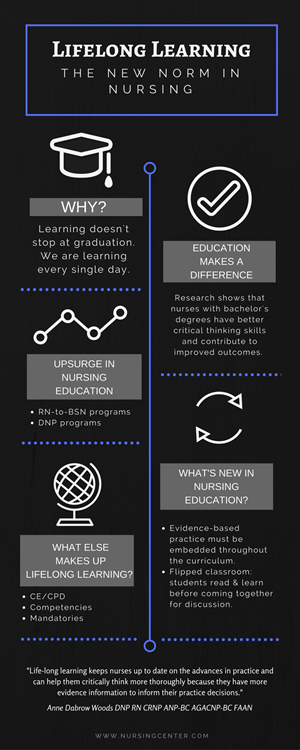Nurses at the forefront of healthcare continue to face challenges that change how we provide Nursing care to our patients. As the Nursing field continues to evolve, here are some of the top Nursing trends to watch in 2023 and for the years to come.
Nursing Shortages
Nursing shortages across all aspects of healthcare will continue to increase in 2023 and for several years to come. In the wake of the COVID-19 pandemic, Nurses have experienced higher rates of burnout which has led to an increased number of Nurses leaving bedside Nursing or even the Nursing profession altogether. Nurse burnout, coupled with the baby boomer generation of Nurses entering retirement, has left an increasing need for Nursing professionals across all aspects of healthcare.
To help combat the growing Nursing shortage, many Nursing programs offer rolling admissions and flexible online Nursing programs to help accommodate as many potential Nurses as possible. The World Health Organization has estimated that nearly 6 million more healthcare jobs must be filled by 2030 to meet the growing healthcare needs. We can expect the demand for Nurses to remain high for many years.
Job Availability Increases
Job availability for Nurses has been rising for several years, and 2023 will be no different. The U.S. Bureau of Labor Statistics estimates that by 2031, job growth for Registered Nurses is expected to increase by 6% and Nurse Practitioners by 40%. Several factors will influence the increasing job availability, including the retirement of the baby boomer generation of Nurses, the growing demand for healthcare, and the inability of Nursing schools to keep up with the increasing demands of students.
Online Nursing Programs
As the demand for Nursing professionals increases, online education programs will continue to grow in popularity. Online programs offer students scheduling flexibility to make it easier to attend classes while dealing with other responsibilities like work and family life. Online programs also create a new market for students living in rural areas who need help commuting to universities.
Travel Nursing
Travel Nursing has been a rising trend for some time, but it came into focus during the COVID-19 Pandemic. As thousands of Nurses traveled to care for the surging patient volumes in COVID-19 hot spots, it was realized how much value travel Nurses bring to the shifting demands of healthcare. Travel Nursing offers higher compensation, the opportunity to work in new environments, and travel opportunities Nurses otherwise would not be able to experience. More and more Nurses have discovered the endless perks of travel Nursing over the past few years, and there is no end in sight. We can expect travel Nursing to continue to grow in popularity.
Increased Salaries
As the Nursing shortage continues, it is expected that we will see an increase in salary for Nurses over the next few years. Adequate compensation is necessary to attract and retain qualified Nurses, recognize them for their expertise, and address their daily challenges. Although increasing salaries for Nurses involves much more than just a higher paycheck, many healthcare networks have been reconsidering healthcare budgets, government policies, and negotiations between employers and unions to help better compensate Nurses for their tireless work efforts.
Mental Health Awareness
Mental health is an essential aspect of well-being for everyone, including Nurses. The Nursing profession has always been one to carry a significant mental burden, and this can take a toll on mental health over time. Although it has been going on for decades, the pandemic revealed a devastating increase in Nurse burnout, stress, fatigue, anxiety, and depression that can no longer be ignored. In the coming years, we can expect to see an increase in mental health awareness and services available to help Nurses better prioritize their mental health. It is anticipated that healthcare organizations will start to implement initiatives to help promote self-care and work-life balance, like mental health services, stress reduction programs, and peer support networks.
Telehealth Services
Telehealth and virtual care services have exponentially increased since the COVID-19 pandemic. Nurses are now providing remote care, conducting virtual health assessments, monitoring patients remotely and offering telephonic or video consultations to help bridge healthcare gaps and improve patient outcomes. Telehealth services allow for increased access to healthcare to patients who otherwise would not have available healthcare like people from rural or underserved areas. As healthcare continues to evolve and grow, we can expect the same from telehealth services over the next few years.
Nursing trends shape the Nursing progression and can significantly impact working environments and the roles and responsibilities of Nurses. As Nursing trends continue to evolve, one thing that will always remain true about the Nursing profession is it will remain a dynamic profession that must continue to grow and adapt to new medical research, technology, and healthcare challenges.


 Nurse gig shifts refer to temporary or short-term Nursing assignments that are often offered through staffing agencies or online apps. These shifts can range in length from a few hours to several weeks or months and are often taken by Nurses who are looking for flexible work arrangements or who want to supplement their income.
Nurse gig shifts refer to temporary or short-term Nursing assignments that are often offered through staffing agencies or online apps. These shifts can range in length from a few hours to several weeks or months and are often taken by Nurses who are looking for flexible work arrangements or who want to supplement their income.

 If you’ve been thinking about continuing your education, you’ll find many of your colleagues are too. This article talks about the importance and trend to keep learning in the Nursing field.
If you’ve been thinking about continuing your education, you’ll find many of your colleagues are too. This article talks about the importance and trend to keep learning in the Nursing field. 
